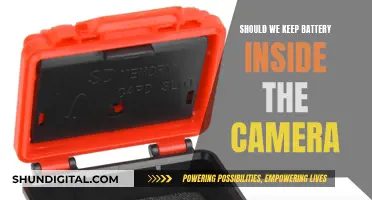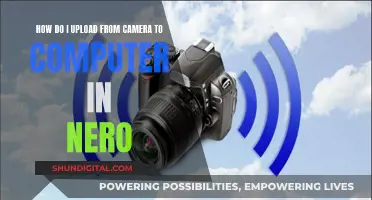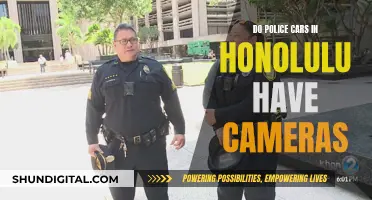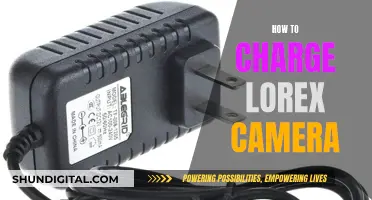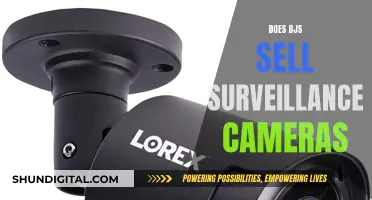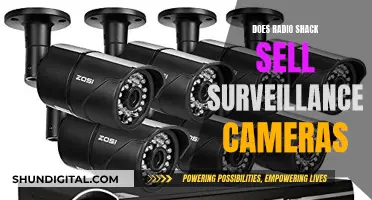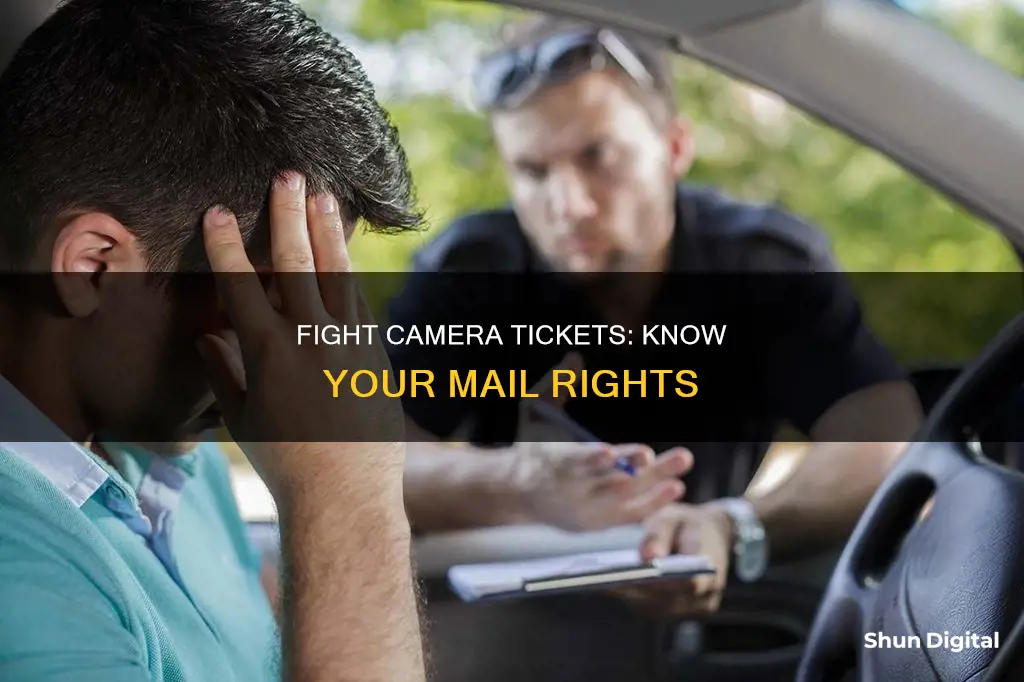
If you've received a traffic ticket in the mail from a camera, you may be able to contest it. First, check the ticket for accuracy, including the date, time, and location. If someone else was driving, you may not be liable. If you were driving, try to remember the details of the incident. Review any photos or videos included with the ticket to see if they clearly show your car and license plate. If not, this may be a valid defence. You can also request additional evidence, such as maintenance records for the camera, to help build your case. Finally, review the specific laws and penalties related to the violation, as these vary by location and type of violation. In some cases, you may be able to simply ignore the ticket without penalty.
| Characteristics | Values |
|---|---|
| Time limit to contest | 21 days |
| Who to contact | The agency that issued the ticket, e.g. the highway patrol or the local police department |
| What to do if you weren't driving | Submit an affidavit swearing that you weren't driving |
| What to do if the photo/video is unclear | Argue that the prosecution can't prove you were driving |
| What to do if the license plate doesn't match your car | Raise this as evidence for dismissal |
| What to do if you want to see the evidence | Serve a request for production |
| What to do if you want to contest the ticket | Plead not guilty by writing to the traffic court |
What You'll Learn
- Check ticket details: name, address, date, time, location, and vehicle information
- Review evidence: photos, videos, and maintenance records
- Identify defences: e.g. unclear photos, incorrect vehicle details, legal right turns
- Plead not guilty: respond by mail, online, or in-person within the deadline
- Prepare your case: research laws, collect evidence, and outline your argument

Check ticket details: name, address, date, time, location, and vehicle information
When contesting a ticket received in the mail from a camera, it's important to carefully check the ticket details. This includes confirming the following information:
- Name: Check that your name is spelled correctly on the ticket. Any discrepancies or errors in the name could be a part of your defence.
- Address: Verify that your address is correct and up-to-date. An outdated or incorrect address could impact the delivery of the ticket and subsequent correspondence.
- Date: Note the date on the ticket. This is crucial for understanding the timeline of events and determining if there were any delays in processing or mailing the ticket.
- Time: Confirm the time listed on the ticket. This detail, along with the date, helps establish the context of the alleged violation.
- Location: Pay attention to the location specified on the ticket. It should include the city, county, or state where the alleged violation occurred. This information is essential for understanding the applicable laws and regulations.
- Vehicle Information: Carefully review the details about your vehicle, such as the make, model, colour, and licence plate number. Ensure that all these details match your vehicle exactly. Any discrepancies could be relevant to your defence.
By meticulously checking these details, you can ensure the accuracy of the information presented and identify any potential discrepancies that may aid in your defence or dispute of the ticket. Remember that you have the right to review the evidence, including photos and videos, and to request maintenance records for the camera equipment.
Charging Your Action Camera: A Quick Guide
You may want to see also

Review evidence: photos, videos, and maintenance records
When it comes to reviewing evidence, photos, videos, and maintenance records are crucial. They can help determine whether you were responsible for the alleged offence.
Photos and Videos
If the notification you received included photos, review them to confirm that it is indeed your car in the photo, and that the photo is clear. Blurry photos can be your best defence, as it may be difficult to confirm that the car is yours. If there is no clearly identifiable photo of you in the driver's seat, this may be another defence. You will be under oath, so you cannot argue that you weren't driving if you were, but you can argue that the prosecution cannot prove you were driving.
You should also expect to see a calibration certificate along with the officer's training certificate. The calibration certificate shows that the camera was operating accurately. If there is no photographic evidence available, the officer may still have evidence from a hand-held speed gun.
Maintenance Records
You should request full maintenance records for the camera and the traffic light or speed monitoring system to establish that they were regularly monitored and maintained. If their accuracy wasn't tested within a short period of time before your ticket was issued, the photo is potentially unreliable as evidence.
Camera Tickets: Enforceable or Not?
You may want to see also

Identify defences: e.g. unclear photos, incorrect vehicle details, legal right turns
If you've received a ticket in the mail from a camera, there are a few defences you can identify to contest it.
Firstly, check the date, time, and location of the ticket. Camera tickets are usually sent to the owner of the car, so make sure that you were actually driving when the ticket was issued. If someone else was driving your car, you generally can't be prosecuted. However, some states treat red-light camera tickets like parking violations, holding the owner of the car liable. Make sure to check the relevant red light law where you received the ticket.
If you were driving, try to remember what you were doing at the time. For example, you may have been making a legal right turn on red when the photo was taken, which could be grounds for dismissal.
Next, review the photos. If the license plate isn't clearly visible, it may be difficult to confirm that the car is yours. If there's no clearly identifiable photo of you in the driver's seat, the prosecution may not be able to prove that you were driving, especially if you live in a jurisdiction that requires tickets to follow the driver, rather than the registered owner of the car.
You can also check the maintenance records for the camera and the traffic light or speed monitoring system. If their accuracy wasn't tested shortly before your ticket was issued, the photo may be unreliable as evidence.
Finally, research the applicable law. Look for cases in your city or county about traffic cameras, and see if any appellate court decisions have ruled on their legality. Aside from the camera itself, there may be other defences, such as improperly posted warning signs for traffic lights, or a necessity defence for speeding (e.g. if you were driving to the hospital in an emergency).
Zumimall Camera Charging: How to Know It's Charging?
You may want to see also

Plead not guilty: respond by mail, online, or in-person within the deadline
If you want to dispute a traffic camera ticket, you must plead not guilty by responding to the citation either by mail, online, or in person within the deadline. The deadline to dispute a ticket is typically within 30 days of receiving the ticket, but this may vary by jurisdiction.
When pleading not guilty by mail, you may need to fill out a form included with your ticket or write a letter to the court. Be sure to include the date of the ticket, the infraction, and any other relevant information. Send your response via certified mail to ensure it is received by the court before the deadline.
If you choose to dispute your ticket online, follow the instructions provided by the jurisdiction that issued the ticket.
If you need to appear in person to plead not guilty, check your citation for the date and time of your arraignment or first appearance. At this hearing, you can plead not guilty and request a formal hearing or trial. Remember to bring any evidence you wish to present, such as photos, police reports, or witness statements.
Switching Camera Modes: Galaxy S7 Tips
You may want to see also

Prepare your case: research laws, collect evidence, and outline your argument
Prepare your case
Research the laws
First, check the date, time, and location of the ticket. Camera tickets are sent to the owner of the car, so make sure you were actually driving when the ticket was issued. The prosecutor must prove that you were driving in that location at that date and time. If someone else borrowed your car, you cannot be prosecuted. Check the red light law in the jurisdiction where you got the ticket. Some states, like New York, treat red-light camera tickets like parking violations, holding the registered owner liable.
If you were driving, try to reconstruct the scene and write down any details you remember. For example, you may have been making a legal right turn on red when the camera took the photo, which could get the ticket dismissed.
Make a note of the exact code section you're cited for violating and read the law. Understand its elements and the penalties for violation. Check that the penalties listed match the fines or penalties on your ticket. Remember, it's the prosecution's burden to prove each element of your violation—you don't have to prove that you didn't do it.
Research the applicable law in your city or county regarding traffic cameras. See if any appellate court decisions have ruled on the legality of traffic camera tickets. There may be other defenses recognised by law, such as specific rules about where warning signs must be posted for traffic lights. If the warning signs were obscured or not present, you'd have a defense. Some states also recognise a necessity defense for speeding.
Collect evidence
Review the photos on the ticket. Confirm that it's your car in the photo and that the photo is clear. If the license plate isn't clearly visible, it may be difficult to confirm that the car is yours. If there's no clearly identifiable photo of you in the driver's seat, the prosecution may not be able to prove you were driving, especially if you live in a jurisdiction that requires tickets to follow the driver, not the registered owner of the car.
If photos were not included with the ticket, request copies from law enforcement. Also, request full maintenance records for the camera and the traffic light or speed monitoring system to establish that they were regularly monitored and maintained. If their accuracy wasn't tested shortly before your ticket was issued, the photo could be unreliable as evidence.
Outline your argument
You can plead not guilty by mail or online if your jurisdiction allows it. Check your citation and plead not guilty before the deadline, which is typically 30 days but may be shorter. If you have to appear in traffic court, show up at the date and time listed on your citation. Plead not guilty and request a full formal hearing or trial. While you're waiting for your hearing, research the law in your area to build a legal defense.
At your hearing, present your case using any evidence to support your claim. Listen while the prosecutor presents their case and make notes on anything you want to bring up later, but do not interrupt or speak directly to the prosecutor.
You can challenge the admissibility of the photograph as hearsay. In some jurisdictions, a red light camera photo is considered hearsay, which is an out-of-court statement presented in court to prove the truth of the matter asserted. Hearsay evidence is generally inadmissible unless it fits into one of the exceptions. Research the issue to find out if this objection is available in your jurisdiction.
You can also assert your right to confront witnesses. The Sixth Amendment of the Constitution guarantees you the right to cross-examine witnesses. Unless a witness appears who maintains the record and system associated with the camera, you do not have this opportunity.
Dispute the authenticity of the photograph. If no one from the company that maintains the camera shows up to testify, object to the use of the photographs for lack of foundation. For the prosecution to rely on the photos, they must present evidence that the camera, the system that connected it to the traffic light, and the traffic light itself were functioning properly. Without establishing this foundation, the photo is not reliable and cannot be admitted into evidence.
If the photos are clear and the judge allows them, but none show you driving, argue that the prosecution cannot prove it was you driving the car. The photo also provides no proof that the traffic light was functioning properly.
Shipping Cameras: Safe Lithium Battery Handling
You may want to see also
Frequently asked questions
First, check the ticket for any inaccuracies or discrepancies, such as an incorrect address or a misspelling of your name. Then, contact the agency that issued the ticket to verify its authenticity. If the ticket is legitimate, you can choose to either pay the fine or contest it. If you believe the ticket was issued wrongly, you can request a dismissal by providing evidence and documentation to support your claim.
The process for contesting a ticket varies depending on your location. In some places, you can contest by mail, online, or by requesting an in-person hearing. Generally, you will need to plead not guilty and provide a valid defence, such as proving that you were not the driver of the vehicle or that the camera evidence is unclear or inaccurate.
A valid defence for contesting a camera ticket includes proving that you were not the driver of the vehicle when the violation occurred. In most states, it is the driver, not the vehicle owner, who is liable for the violation. Another defence is to review the camera evidence, such as photographs and videos, and argue that they do not show a clear violation. For example, if the license plate in the photo does not match your car, you may have grounds for dismissal. Additionally, some states require warning signs to be posted at intersections with red light cameras, and the lack of these signs could be a valid defence.


